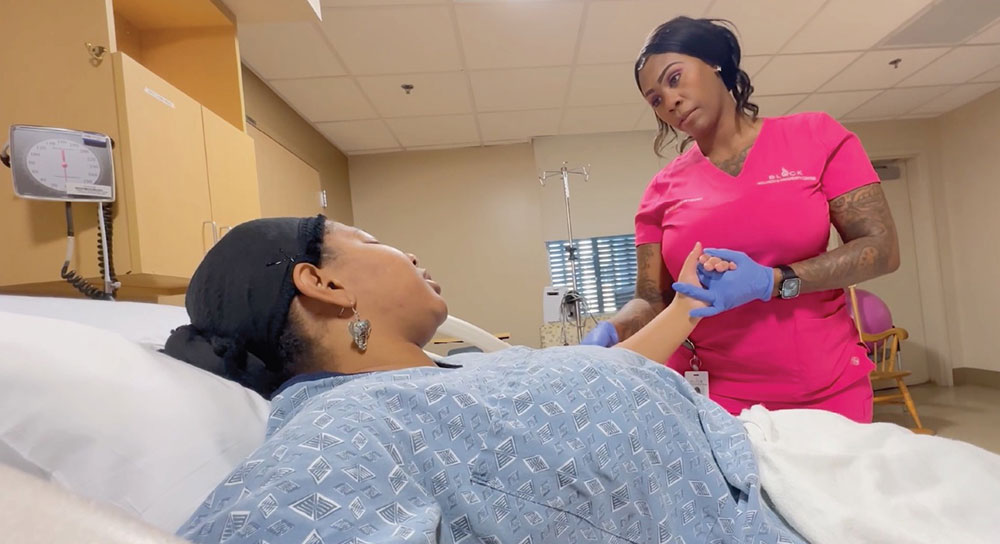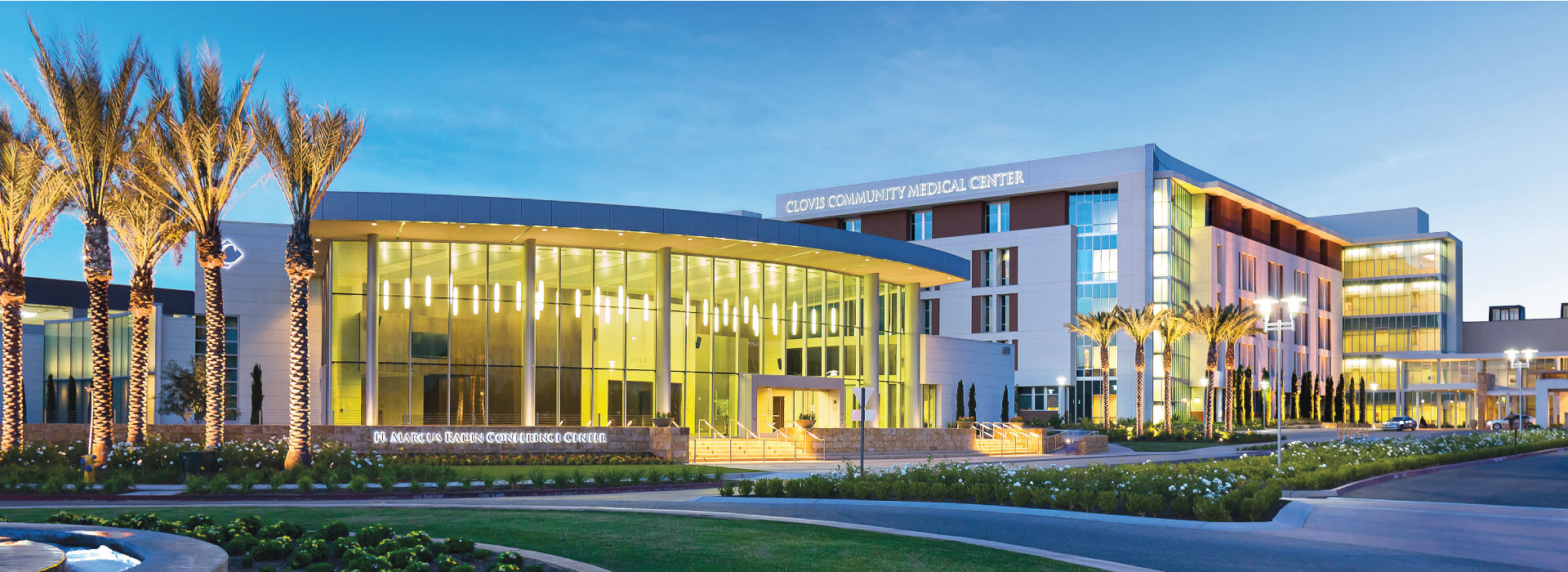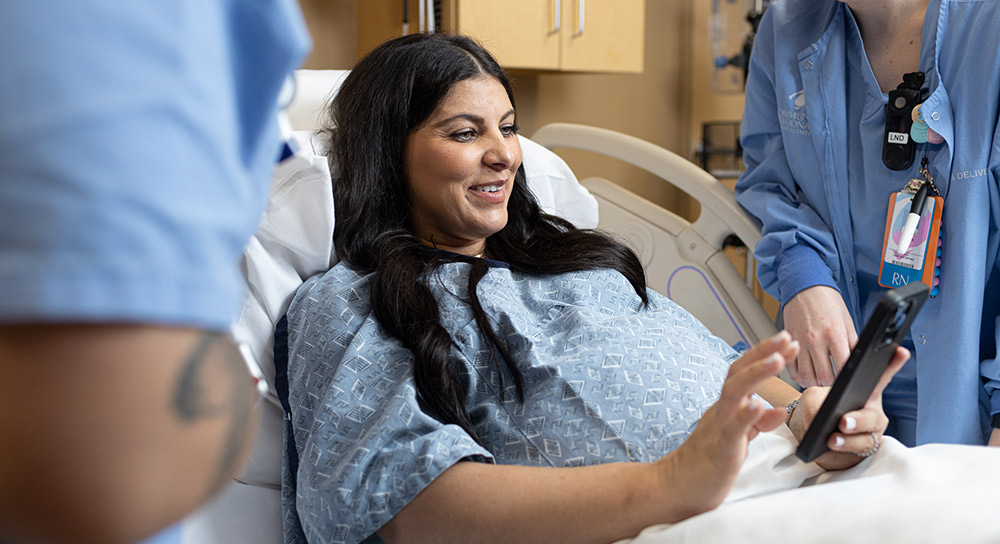
It’s important that each and every one of our patients and visitors feels that Community Medical Centers is accessible, inclusive, and knowledgeable about the care they need and deserve. As Pride Month comes to a close, we want to share how we’re training our staff to do just that for our LGBTQ (Lesbian, Gay, Bisexual, Transgender and Queer) patient population. And not just during Pride Month – but year ‘round.
We do understand that the use of the word “queer” may be a little uncomfortable for some. Queer is a very common term in the LGBTQ community and is what the “Q” in LGBTQ stands for, although sometimes is replaced with “questioning.” It was a term for me [Amanda] that was hard to embrace at first. This was a word that I heard all too often growing up and not in a positive way. However, for the younger youth it is a term of empowerment. It is a way of taking back the disempowerment that others have tried to place upon LGBTQ people. This term has also become a way for youth to say “I do not fit in the box you want me to fit in, I am just me.”
Education around this topic is often lacking in medical schools and residency programs, and it is often left to individual providers to seek out their own training. That’s why we’re currently working with our staff to close that education gap and increase understanding of our LGBTQ patients to make sure they’re as comfortable as possible with us handling their medical care.
"I’m always delighted when it seems as if anyone [in clinic] has a clue – like any clue whatsoever.
– Anonymous Patient
– Anonymous Patient
Refer to patients by the gender identity, name and pronouns they disclose
While it may be important for billing and insurance purposes to know a patient’s legal name and sex as defined on their driving license/legal identification, this should not prevent any medical professional from using a person’s correct name and gender identity when talking to them or about them to other healthcare professionals.
- If a patient’s gender presentation indicates to a reasonable person which gender identity they identify as, use pronouns appropriate to that gender
- If staff member uses pronouns as above but is then corrected, use pronouns as expressed by patient
- If gender presentation does not clearly indicate a person’s identity, staff should use gender neutral language or discreetly and politely ask the patient which pronouns he/she/they use
“I expect practitioners not to ask [about my gender identity] when it is not relevant. Sometimes it comes off as curiosity.”
– Anonymous Patient
Don’t assume sexual orientation
Sexual orientation is not something that is visible, and making assumptions can lead to mistrust in the patient-physician relationship. If asking this question is important to your scope of practice, ensure questions are open and that they encourage your patient to answer honestly. Many patients are hesitant to fully disclose information for fear of negative reaction, often based upon previous negative encounters with healthcare personnel.
If questions regarding sexual orientation and gender identity are not important to scope of practice or to the injury or illness, then don’t ask. These questions can be very intrusive and again may lead to mistrust.
Remember: Sexual orientation does not necessarily relate to gender identity or sexual behavior. A trans man can be gay, heterosexual, bisexual, asexual, etc. just as a cisgender man might be.
If questions regarding sexual orientation and gender identity are not important to scope of practice or to the injury or illness, then don’t ask. These questions can be very intrusive and again may lead to mistrust.
Remember: Sexual orientation does not necessarily relate to gender identity or sexual behavior. A trans man can be gay, heterosexual, bisexual, asexual, etc. just as a cisgender man might be.
Create a safe, welcoming environment
From the moment our patient walks through the door, it’s important that they feel comfortable seeking medical care from us. Here are just a few ways that a facility or office can help LGBTQ patients feel welcome:
- Provide gender neutral bathrooms (not restricted to male or female) – all single user bathrooms must be gender neutral in the state of California.
- Signs, brochures and magazines in waiting rooms related to LGBTQ topics to be welcoming to our patients
- Have intake forms (or have staff ask questions) that include sex assigned at birth and gender identity, rather than ‘What is your sex? Male or Female’
- Ensure all staff in your office are trained in basic terminology. Front desk staff are often the first interaction a patient has with the office and that interaction leaves a lasting first impression.
Understand basic LGBTQ terminology
As a LGBTQ-sensitive healthcare provider, it’s important to understand some of the basic terminology. If you are a medical professional looking to improve your understanding, here are just a few of the terms that are important to know:
Sex assigned at birth: The sex (male or female) assigned to a child at birth, often based on external anatomy. Also called birth sex or biologic sex.
Intersex: A person with one of a group of conditions where reproductive organs and genitals do not develop as expected. Some prefer term disorders of sex development. Used to be called hermaphrodite but this term is not recommended.
Gender identity: A person’s internal sense of their gender, may be male, female, neither or both
Transgender: A person whose gender identity is different than sex assigned at birth
Cisgender: A person whose gender identity aligns with sex assigned at birth, cis meaning “on this side of”
Transman, Female to male, FTM: A person whose sex assigned at birth was female, but gender identity is male
Transwoman, Male to female, MTF: A person whose sex assigned at birth was male, but gender identity is female
Gender non-binary: A person whose gender identity does not lie within binary categories of male or female. Also called genderqueer
Gender fluid: a person whose gender identity is not fixed, may feel more of one gender on some days, and another gender on different days, sometimes also called genderqueer
Gender presentation/expression: The external manifestation of a person’s gender identity, i.e. the way a person dresses, acts, behaves. This may or may not conform to socially-defined gender expressions of feminine, masculine, androgynous, etc
Pronouns: The pronouns a person wishes to use, examples are he/him, she/her, they/them or ze/zir (last two examples are more often used by gender non-binary or gender fluid patients)
Want to learn more? Click here for a complete glossary of LGBT Terms for Health Care Teams
Sex assigned at birth: The sex (male or female) assigned to a child at birth, often based on external anatomy. Also called birth sex or biologic sex.
Intersex: A person with one of a group of conditions where reproductive organs and genitals do not develop as expected. Some prefer term disorders of sex development. Used to be called hermaphrodite but this term is not recommended.
Gender identity: A person’s internal sense of their gender, may be male, female, neither or both
Transgender: A person whose gender identity is different than sex assigned at birth
Cisgender: A person whose gender identity aligns with sex assigned at birth, cis meaning “on this side of”
Transman, Female to male, FTM: A person whose sex assigned at birth was female, but gender identity is male
Transwoman, Male to female, MTF: A person whose sex assigned at birth was male, but gender identity is female
Gender non-binary: A person whose gender identity does not lie within binary categories of male or female. Also called genderqueer
Gender fluid: a person whose gender identity is not fixed, may feel more of one gender on some days, and another gender on different days, sometimes also called genderqueer
Gender presentation/expression: The external manifestation of a person’s gender identity, i.e. the way a person dresses, acts, behaves. This may or may not conform to socially-defined gender expressions of feminine, masculine, androgynous, etc
Pronouns: The pronouns a person wishes to use, examples are he/him, she/her, they/them or ze/zir (last two examples are more often used by gender non-binary or gender fluid patients)
Want to learn more? Click here for a complete glossary of LGBT Terms for Health Care Teams
For more information please check out these resources:
UCSF Center of Excellence for Transgender Health
National LGBT Health Education Center, Fenway Institute
GLMA: Health Professions Advancing LGBT Equality
Creating Equal Access To Quality Health Care for Transgender Patients. Human Rights Campaign
Thank you for reading this post – we are looking forward to future opportunities to educate our staff and improve our care for the LGBTQ population!
National LGBT Health Education Center, Fenway Institute
GLMA: Health Professions Advancing LGBT Equality
Creating Equal Access To Quality Health Care for Transgender Patients. Human Rights Campaign
Thank you for reading this post – we are looking forward to future opportunities to educate our staff and improve our care for the LGBTQ population!
Written by LGBTQ advocates:
Andrea Long, MD
Department of Surgery, Community Regional Medical Center
Amanda N. Watson
Corporate Director of Revenue Systems & Support Services



.jpg)


